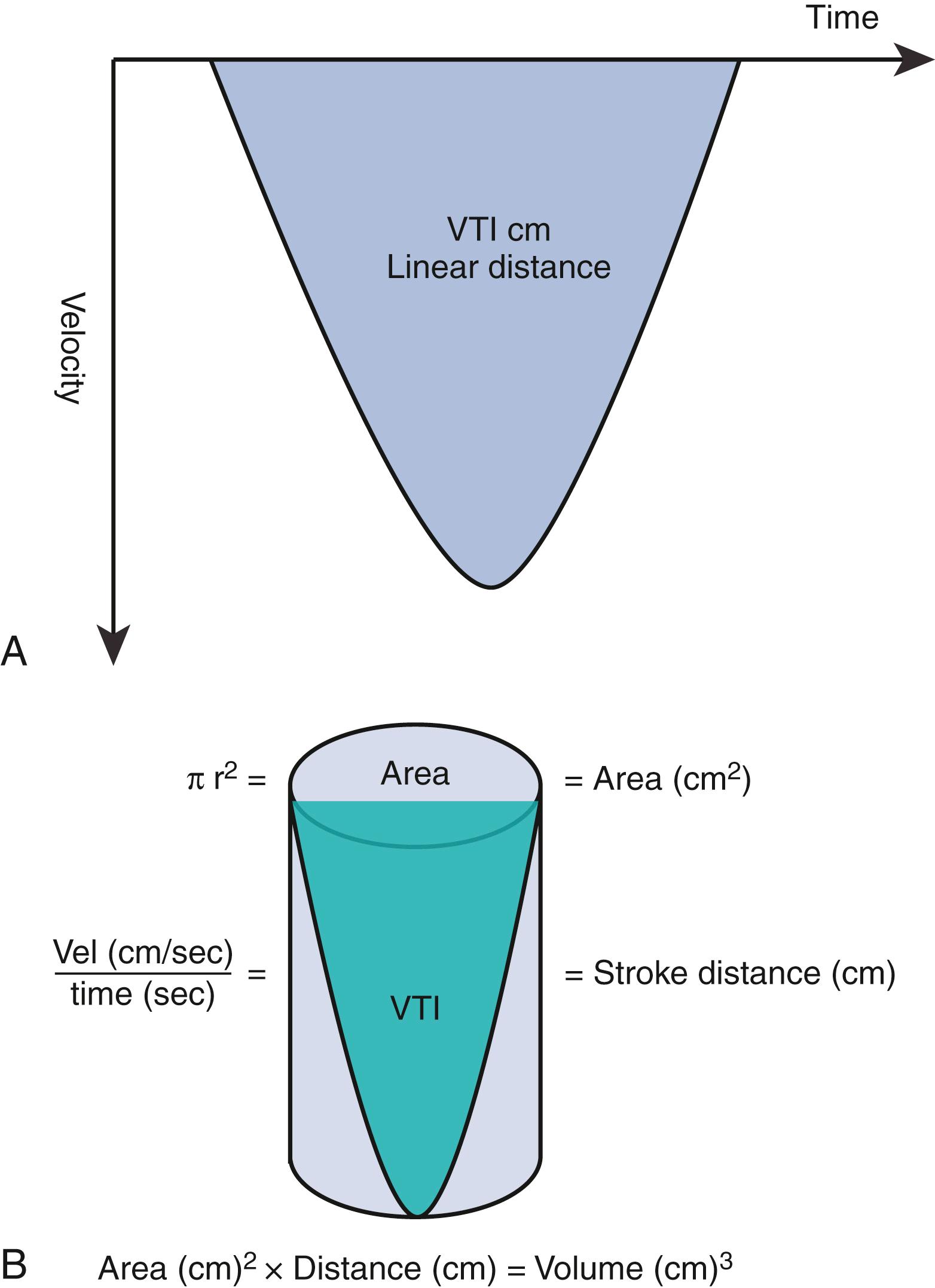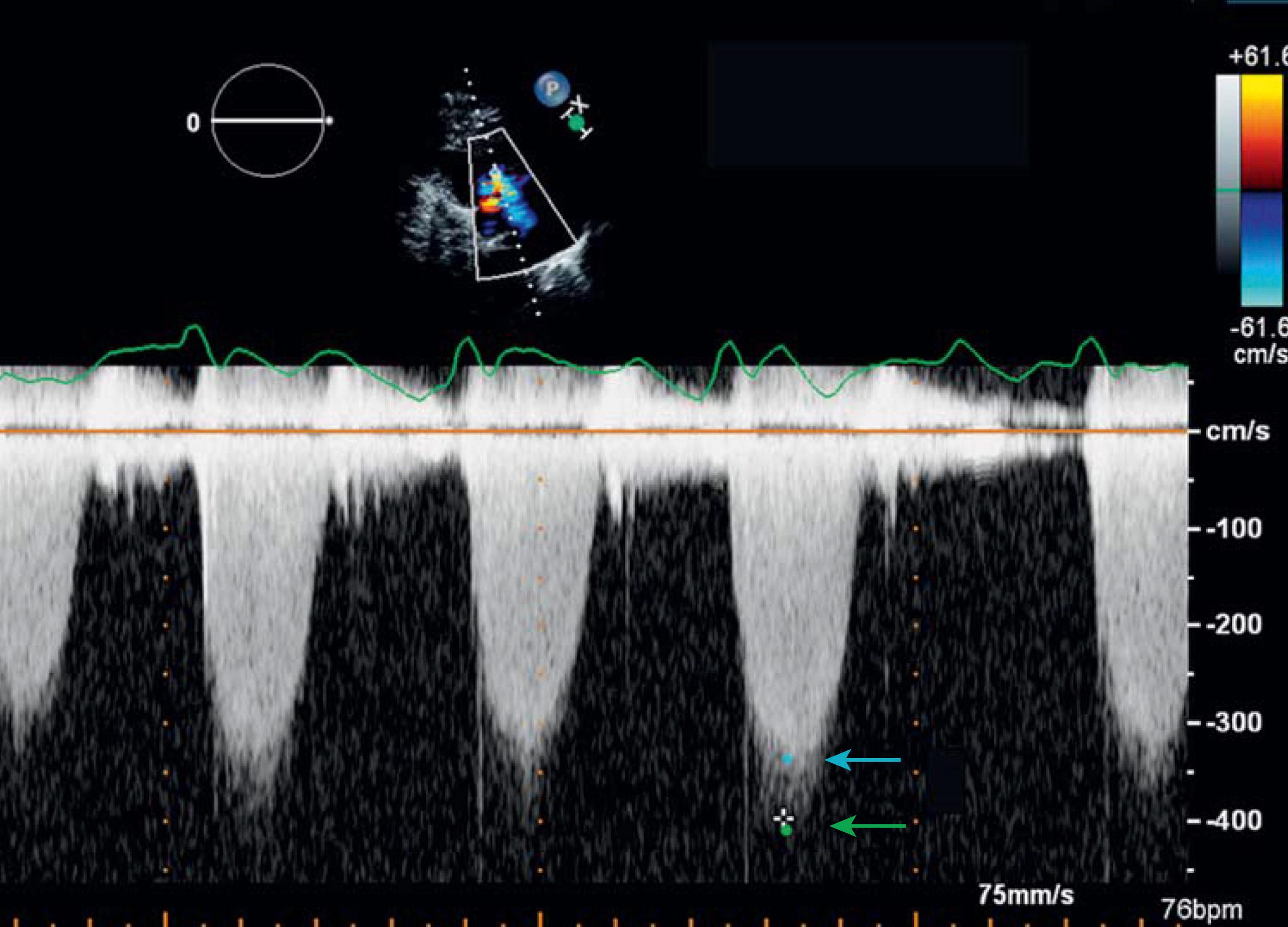Physical Address
304 North Cardinal St.
Dorchester Center, MA 02124
The authors would like to thank Drs. Laurence G. Rudsky and Amr E. Abbas for their contributions to this chapter in the previous edition.
Echocardiography is the primary clinical method for the noninvasive measurement of right heart hemodynamic parameters and is an indispensable tool for the initial assessment, diagnosis, longitudinal follow-up, and prognostication of patients with abnormal right heart function. Ohm’s law describes the relationship between flow, pressure, and resistance in an electric circuit, where the electrical potential between two points (pressure gradient) is equivalent to the product of current (flow) and resistance; ΔP = Q × R. Ohm’s law principles applied to the circulation are the foundation for a complete hemodynamic evaluation of the right heart with the need to resolve for parameters of flow, pressure, and resistance.
Doppler echocardiography is able to quantify blood flow through its ability to resolve for blood flow velocities. Christian Andreas Doppler described the mathematic relationship between the magnitude of the frequency shift, which is the difference in the reflected frequency from the emitted frequency and the velocity of the target (red blood cell) relative to the source (the transducer). Doppler echocardiography is able to then record instantaneous velocities throughout the cardiac cycle. Flow (cm 3 /sec) can be derived as the product of blood flow velocity (cm/sec) multiplied by the cross-sectional area (cm 2 ) of the structure through which the blood is flowing; flow = area × velocity. Because flow in the cardiovascular system is pulsatile, individual velocities during the ejection phase must be sampled and integrated to measure flow volume. The sum of these individual velocities is called the time velocity integral (TVI) and is equal to the area enclosed by the Doppler velocity profile. The TVI then represents a linear distance, the average distance a red blood cell travels per beat, and stroke volume (cm 3 ) is calculated as the product of the TVI (cm) and cross-sectional area (cm 2 ) of the structure through which the blood is flowing ( Fig. 31.1 ).

Doppler provides the ability to resolve for blood flow velocities. Daniel Bernoulli described the relationship between blood flow velocities and pressure gradient. The Bernoulli equation is founded on the principle of conservation of energy: although energy may change its position or form, the total amount of energy within a closed system must remain constant:
in which ΔP is the pressure gradient; ⍴ is the mass density of blood; V 1 and V 2 are the velocity proximal and distal to obstruction, respectively; R is the viscous resistance; and μ is viscosity.
Under most physiologic conditions, the latter two terms (flow acceleration and viscous friction) are negligible and can be ignored, and V 2 >>> V 1 ; thus, V 1 can be ignored. Therefore, under most physiologic conditions, a simplified Bernoulli equation can be applied to the peak velocity obtained to derive the peak instantaneous gradient:
It is crucial that one pays close attention to the technical aspects of Doppler interrogation, ensuring as parallel as possible an intercept angle with the axis blood flow, so as not to underestimate the velocity and subsequently the derived pressure gradient. Therefore, imaging from multiple windows and the use of color Doppler to help guide the position of spectral Doppler interrogation are critical to ensure capture of the true (highest) velocity signal. When measuring either the peak velocity or tracing the spectral Doppler profile to determine the TVI, the Doppler gain must not be set too high, and one must avoid tracing the “fuzz,” but rather the modal velocities ( Fig. 31.2 ). Suboptimal spectral Doppler signals can be enhanced with the use of either agitated saline (air, blood, saline) contrast or manufactured ultrasound-enhancing agents.

Become a Clinical Tree membership for Full access and enjoy Unlimited articles
If you are a member. Log in here